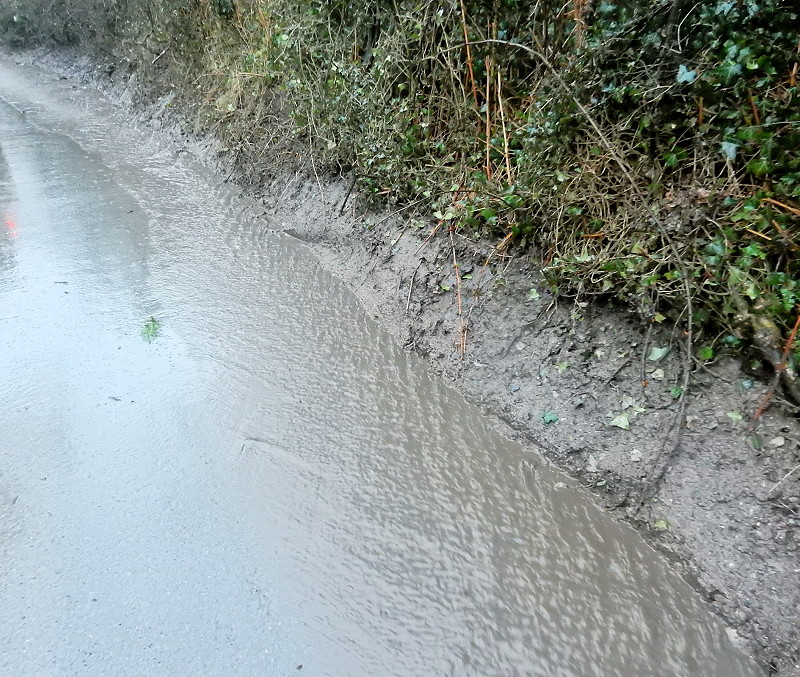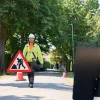Gigaclear Fibre Contractors in Battle of the Devon UK Hedgerows
Lately it’s been raining hard in deepest rural Devon (England), so hard in fact that some locals are concerned that the good work being done by Gigaclear’s contractors to deploy a new 1Gbps Fibre-to-the-Premises (FTTP) broadband network in the area could soon be washed away.
At present Gigaclear has a number of significant deployments in Devon, including both their state aid supported project with the wider Connecting Devon and Somerset project (here) and a separate commercial rollout that was recently given a £2.5m extension (here). Today’s story largely focuses upon part of the rural Blackdown Hills area.
Anybody who has spent time travelling around Devon will know that there are plenty of narrow lanes, many of which only have space for a single vehicle. A lot of these lanes also tend to be flanked by “Devon Bank” hedgerows, which consist of a fairly steep rubble or earth bank that is topped with brushy shrubs or trees. Devon’s hedges are considered so iconic by some locals that they even have their own website.
Advertisement
Unfortunately the hedges and narrow lanes have also presented somewhat of a challenge for Gigaclear. A number of locals in the aforementioned area have contacted ISPreview.co.uk to highlight some concerns, not least that the ISP’s contractors (MGM Utilities) preferred method on a number of lanes is to chop into the base of the bank to lay the conduit (as opposed to cutting into the tarmac).
After doing all that the contractors then appear to have pushed back the now loose soil and stones, thus potentially destabilising the whole bank. At the same time they sometimes end up filling-in any slight ditch that might have existed to cope with water / rain run-off. The result is as pictured above, and below.

Locals tell us that the rain is no longer being directed into a ditch and has instead been running down over the exposed soil. In time they fear that this could wash out the trenching that contractors have built, or tractors may squash the cables as they travel down the related lanes.
Advertisement
One Resident told ISPreview.co.uk:
“They have been digging into the bases of the high hedge-banks (renowned Devon Banks) to place their conduit and then pushing back the now loose soil and stones so destabilising the whole bank. There are a few verges – but not many and these usually have rainwater ditches. The contractors have been digging out the ditches and then filling them up once the conduit is in. All of this is much quicker than working on the highway!
Parishioners feel that they are between a rock and a hard place on this. Reliable broadband access against several miles of old copper BT wire has to welcomed and to complain about the standards of the work being done by the Gigaclear contractors could be seen as anti and backward looking.”
We understand that Battle Street, below Gollick Park, was the first lane with both banks dug out and ditches filled, and Smeathy Lane is said to have had the ditches filled in. Others also exist. In addition, it’s been claimed that the hedge banks are private land (as allegedly stated by the head of Devon Highways), although Gigaclear dispute this and state that the “banks, hedgerows and verges in question show in Land Registry as public land.”
The locals we spoke with were also apprehensive about being named and wished to stress that, while they very much welcome Gigaclear’s work, they want the operator to conduct it with more care. In response a spokesperson for the ISP told us that they “apologise for any inconvenience caused to local residents” and “now recognise the need to consult with the local community in future situations to establish their involvement in the conservation of local land.”
A Gigaclear Spokesperson told ISPreview.co.uk:
“Together with our delivery manager, the CDS BDUK programme manager, and a Devon Highways representative, we have met with local residents and responded to the concerns presented. This consultative session was well received by all parties and resulted in a much better understanding of the considerations that must be taken into account as we carry out our construction work in the region.
Following this session, we have subsequently changed our approach to tackle the particular challenges presented by Devon banks, narrow verges, hedgerows and carriageways. After further consultation with all interested parties, we have agreed the optimum solution and concluded that trenching alongside the roadside bank will not encroach under the vertical edge of the bank. Excess spoil will always be removed to avoid mud run-off into the road.”
Gigaclear also clarified that they were unable to use the Narrow Trenching method in these locations because the “carriageways are often shallow tarmac laid over a loose, rocky subsurface, comprising large chunks of flint and boulders. After careful investigation, we found that there was a high risk that narrow trenching would result in collapse of the surface and extensive road damage.”
The ISP has also accepted that it is their “responsibility to carry out reinstatement and remedial works” (all work is said to be monitored by the local Highways Authority), which will start within a few weeks of completion to allow for weathering and settlement to take place.
Advertisement
However some remain sceptical about the promised improvements and fear that little will change on the ground, not least since they have only fleeting faith in the ability of Devon Highways to keep an effective eye on the work being conducted. We did endeavour to contact the local highways authority but so far they have not responded.
Unfortunately major civil engineer work rarely occurs without causing some problems or disruption for nearby residents and this is true for almost all of the operators that are involved in such deployments. However the resultant prize of ultrafast broadband is usually worth the trouble.
Mark is a professional technology writer, IT consultant and computer engineer from Dorset (England), he also founded ISPreview in 1999 and enjoys analysing the latest telecoms and broadband developments. Find me on X (Twitter), Mastodon, Facebook, BlueSky, Threads.net and Linkedin.
« ISP Onecom Acquires the UK Customer Base of True Telecom


















































Comments are closed